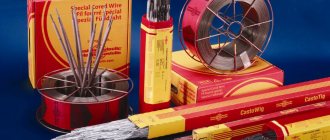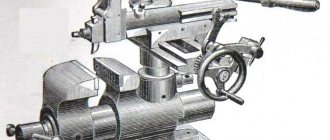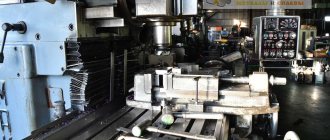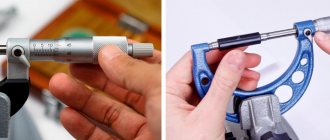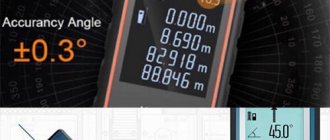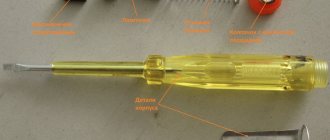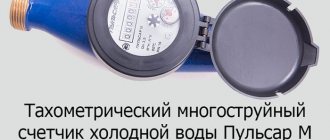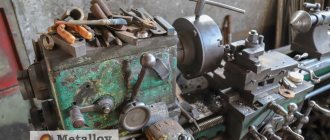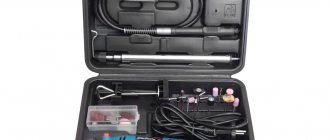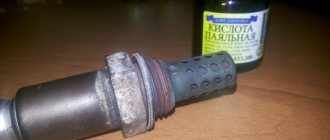Calipers
Vernier instrument is the general name for measuring instruments that have a measuring rod in their design. Stange - rod, rod (German).
Vernier calipers are a very popular measuring tool in mechanical engineering and home instrumentation.
The main element of a vernier tool is a rod on which the main scale is applied, with a pitch of 1 millimeter, and a slider sliding along it, with a vernier located on it (another scale).
A vernier caliper is a fairly universal tool, but its varieties may differ in their narrow specialization:
- A height gauge is a measuring instrument that has a base, which is the beginning of the scale. Measurements with a height gauge are carried out on a measuring table, which has technical requirements.
- Vernier depth gauge is a measuring tool used to determine the geometric parameters of holes, grooves, ledges, etc.
- A caliper gauge is a measuring tool used to determine the thickness of teeth.
Vernier caliper BISON “EXPERT”, ШЦЦ-I-150-0.01, digital, stainless steel. steel, metal case, 150mm, measurement step 0.01mm
The designs of vernier calipers differ in standard sizes and characteristics, the shape of the movable frame (slider), and measurement limits.
According to their design, vernier calipers are divided into single-sided and double-sided, with or without a depth gauge.
Vernier calipers have a measurement limit of 0.1 millimeters or 0.05 millimeters. The measurement limit of the vernier scale is equal to the value of one division of the main scale.
During the measurement process, using a vernier caliper, the whole number of millimeters is determined by the zero stroke on the vernier scale, and the number of tenths of a millimeter is determined by the completely matching strokes on the main scale and the vernier scale.
This is interesting: Ventilation passage through the wall
Indicator
The indicator is used to measure deviations in product dimensions. Indicators are used to check the vertical and horizontal planes of individual parts, as well as the runout, ovality and taper of shafts and cylinders. The measurement accuracy of the indicator is up to 0.01 mm.
The indicator consists of a housing, inside of which there is a mechanism consisting of several gears, a rack, stops and a dial with an arrow. The dial has 100 divisions, each of which corresponds to 0.01 mm. When the measuring pin moves by 0.01 mm, the arrow moves around the circle by one scale division, and when the pin moves by 1 mm, it makes one revolution. The measuring pin moves back under the action of a spring.
Rice. Indicator: a - indicator section; b - universal stand for mounting the indicator; 1 - measuring pin; 2 - worm wheel; 3 and 5 — teeth; 4 - rod; 6 and 9 — springs; 7 — carriage; 8 — carriage guide.
Figure b shows a universal stand for attaching an indicator, with which parts are measured in different positions.
To measure cylinder wear, the indicator is mounted on a special device - a passimeter.
Rice. Indicator with passimeter for measuring cylinder wear: 1 and 2 - rods; 3 - movable tip; 4 — swinging lever; 5 - fixed rod; 6 — calibrated rings; 7 — set of fixed rods; 8 — key for disassembling and assembling the device head.
The measuring part (head) of the device consists of a movable tip and a fixed rod. The movement of the movable tip is transmitted by the swing arm and rods to the indicator measuring pin, which in turn acts on the mechanism and the pointer. The indicator kit includes a set of fixed rods and calibrated rings that allow you to measure cylinders of different diameters. Before measurement, a stationary rod is installed in the head of the device (sometimes calibrated rings are placed under the collar of the stationary rod). To select the rod and ring, the cylinder is first measured (approximately) with a caliper or ruler.
Purpose of measuring instruments
They are designed to obtain measured values within a specified range. Measuring instruments, for the most part, have devices that make it possible to convert the measured value into a signal of measuring information, and a device for indicating the signal in the most accessible form.
Often such a device has a digital scoreboard, chart, scale with arrow or display on which measurements can be easily taken and recorded.
In computerized SI, registration is carried out automatically on various types of media.
Application of measuring machines
Classification of analog measuring instruments
To make accurate measurements, not only hand-held measuring instruments can be used, but also special machines called coordinate measuring equipment. The peculiarity of this equipment is the ability to take measurements in three coordinates, which ensures maximum accuracy of calculations.
The design of the machines resembles a table on which working heads equipped with sensors are installed. To make a control measurement, the workpiece is placed on the table, and sensors read the parameters of the part.
Machines can capture data in two ways:
- contact, involving the use of a probe sensor;
- contactless, in which reading occurs by sending a light signal to the surface of the part.
Types of measuring instruments
- analog , i.e. the output signal is a continuous function of the quantity to be measured;
- digital , in which the output signal is presented in digital form;
- indicating - only allow readings;
- recording , allowing to register the measurement result;
- summing - their readings are functionally related to the sum of several quantities;
- integrating , allowing you to determine the value of the measured quantity by integrating it over another quantity.
Metal measuring ruler
Ruler 1m STAYER “PROFI”, 3427-100_z01
It is difficult to make a mistake if we assume that the first measuring tool that a person gets acquainted with is a measuring ruler, in all its manifestations (tailor's meter, geometric triangle, etc.).
Ease of use and ease of use make it the most common measuring instrument, albeit for not very accurate values.
During manufacturing, the surface of the ruler is equipped with one or two measuring scales, and the production itself and parameters are regulated by GOST.
According to GOST 427-75 from 1975 (which is still relevant today), rulers must be manufactured with the following measurement limits:
- 150 mm;
- 300 mm;
- 500 mm;
- 1000 mm;
- 1500 mm;
- 2000 mm;
- 3000 mm.
Careful GOST also regulates the parameters of applied millimeter, half-centimeter, centimeter strokes, as well as the diameter of the hole for the nail.
Measuring metal rulers are produced from cold-rolled, heat-treated steel tape with a polished surface of strength groups 1P and 2P, followed by galvanic chrome plating.
The zero value of the scale (counting point) coincides with one of the ends, while the second is rounded and equipped with a hole (presumably for a nail, for easy storage).
Each five-millimeter mark (in a centimeter), for ease of reading, is made a little higher than its millimeter counterparts, and the tenth is made even higher and receives a digital designation.
The clearance between the calibration plate and the plane of the ruler, placed on the plate with the scale facing up, should not exceed 0.5 mm for rulers with a scale length of 150, 300, 500; 0.7 - for rulers with a scale length of 1000 mm and 1 millimeter of clearance for rulers more than one meter.
The permissible deviation of the scale dimensions of a meter metal ruler is +/- 0.2 millimeters.
How to measure the diameter of a pipe that is completely accessible for measurement
If it is necessary to measure the diameter with minimal requirements for accuracy, and the cross-section of the product is completely accessible for measurements, then you can use a regular ruler or tape measure. The measuring instrument is applied at the widest part and the number of divisions is counted. This method allows you to determine the outer diameter with an accuracy of a few millimeters.
To measure small diameter products, use a caliper. To do this, the legs of the tool are applied to the end and pressed firmly, but without force, against the outer walls of the pipe. Using the instrument scale, the diameter is determined with an accuracy of tenths of a millimeter.
To calculate the internal diameter, the thickness of the pipe walls is measured along the cut. Double the wall thickness is subtracted from the outer diameter to obtain the inner diameter.
Steel water pipes are defined by their internal diameter, which is often measured in inches. How to find out the diameter of a pipe in inches if this value is known in centimeters?
To do this, you need to multiply the diameter in centimeters by 0.398. To convert back, the diameter in inches is multiplied by 2.54. That is, the internal diameter of a one-inch pipe is equal to 2.54 cm or 25.4 mm, and, for example, a ½-inch diameter is approximately 12.7 mm.
Classification of measuring instruments in mechanical engineering: types
The key parameter is the assigned tasks; according to their purpose, the following options are distinguished:
- manual – readings are taken by a person;
- digital – similar operations are carried out by a computer;
- mechanical - dimensions are fixed by direct physical contact with the surfaces of the part;
- laser – determination of compliance occurs without contact with the workpiece;
- construction – focused on sites for the construction of buildings, needed to calculate LxWxH, angle and similar parameters;
- marking - it is used to determine the contours, important points, distances of future objects before starting their production;
- universal – allows you to solve several problems at once.
The categories are quite arbitrary: one of them can include several devices at once. For example, a ruler is both manual and mechanical.
There is also a division by materials of manufacture (devices made of metal, plastic, wood, composites) and by design (simple and complex). But there is one more operational indicator that deserves separate consideration.
This is interesting: How to use an Ariston water heater, operating instructions for Ariston boilers for 30, 50, 80 liters, features of the Ariston viale, platinum, sg30or, ti tronic models
Hand construction tools
Roulette . The main tool that no builder can do without is a tape measure. A tape measure is something like a ruler, made in the form of a metal tape with divisions equal to 1 mm. The tape is wound into a housing, which can be made of either plastic or metal. The tape can have different widths and lengths.
Of course, a tape measure is universal, required for carrying out measuring work in any field of activity.
Technical characteristics of the roulette
Spirit level (level) . This device is used to determine the evenness of horizontal and vertical surfaces. The length of the level can vary from 0.3 m to 2.5 m. The body of the level is made of any lightweight material, such as plastic, and is equipped with several windows.
Through the windows you can see a glass tube partially filled with a special liquid. It is this liquid that allows you to determine the evenness and level of slope of the surface.
Plumb . This is the simplest but indispensable measuring tool that every builder uses. The plumb line represents a rope (twine), at the end of which a metal cone-shaped weight is tied. It is used in cases where it is necessary to control the verticality of work, for example, during brickwork.
Square and grinder . A square is made of wood or metal and is used to create right angles. Malka is made from the same materials. Its design consists of a clip and a ruler, fastened together with a hinge. While the square can be used in any area of construction, the square is most often used when installing rafters.
Magnetic square
Test squares
Measurement of angular quantities, a discipline that sometimes has to be addressed in construction or mechanical engineering.
As a measuring tool for these purposes, universal angular meters (with the ability to set angular values) or specialized testing squares are used.
When designing, designers often choose integer angular values 30, 45,
60, 90, 120 degrees.
To mark, check or determine angles, use:
- carpenter's square;
- carpenter's square,
- combined square;
- goniometers;
- protractors;
- level goniometers;
- square-level;
- corner levels, etc.
When checking right angles, squares are used.
Squares whose sides do not exceed 500 millimeters are made of case-hardened steel, followed by heat treatment and hardening of the surface.
Test squares are divided into accuracy classes:
- zero accuracy class;
- first class of accuracy;
- second class of accuracy;
- third class of accuracy.
The most accurate is zero.
Verification method and operating conditions of measuring heads
How to weld a plastic bumper with your own hands - necessary tools and consumables
The average service life of devices of this type is 6 years. Operating conditions for first class accuracy measuring heads:
- temperature - from -20 to +35 °C;
- humidity - up to 80%;
- the presence of aggressive gases is not allowed.
It is not permitted to apply oil or emulsion to the surface of the device. If the smoothness of operation decreases, partial flushing of the mechanism is allowed without disassembling it. To do this, remove the cover from the device, after which it is placed in aviation gasoline. During the washing process, it is not allowed to enter the indicator scale.
The device is verified in accordance with the MI 2192-92 procedure. The calibration interval is 1 year.
Types and purposes of micrometric instruments
Measuring distance requires the correct type of tool and a working micrometer screw. To measure the thickness of an object, the appearance is used. These common tools are also known as micrometer calipers. From the outside, the tool measures wires, spheres and blocks. Internal micrometers take the opposite measurement, the distance inside an object, such as the diameter of a hole. Tube micrometers measure the thickness of the tube, while depth micrometers measure the depth of the slot or pitch.
Favorable prices for micrometers
Each type is equipped with specialized equipment for specific tasks. Because the object being measured is grasped, the anvil and spindle tip are parts that are customized for unique applications. Some micrometers have multiple anvils for more accurate measurements. The anvil can be shaped into a disk, a v-shape, or form part of a screw thread. Some micrometers come with interchangeable anvils to allow for different types of measurements. Let's consider the most famous and common micrometric instruments, their types and purposes.
Outer
A common and constantly used type is the external appearance.
Its action is used to measure the outer diameter of an object.
Interior
The internal view is used to measure the internal diameter of a hole or tube.
Two kinds of internal micrometer:
- Caliper
- Tubular
Vernier caliper option
Internal varieties have measuring jaws similar to those found on a caliper. The jaws are inserted into the space to be measured and adjusted by turning a thimble or ratchet.
Tubular and rod
Tubular and rod micrometers are placed into the space being measured and expanded until the measuring surface touches the edge of the space being measured.
The rod tool comes with a set of measuring rods that attach to the micrometer, thereby expanding the measuring capabilities of the device.
Some rod micrometers have a handle that connects to the instrument and helps the user measure in hard-to-reach areas.
Deep
Depth ones are used to measure the depth of holes, grooves and steps.
They come with a variety of interchangeable rods of different lengths so that they can be used to measure a range of depths.
Micrometric depth gauge
In essence, this measuring instrument is designed exactly the same as a micrometer. The only difference is that it is equipped not with a bracket, but with a base. It is in it that the so-called measuring stem is installed. In order to measure depth using a micrometric depth gauge, a special rod is used. It is installed on a screw and has a special shape. The measurement limit of modern micrometric depth gauges is up to 300 millimeters, and the division price of their verniers is 0.01 millimeters.
Dial indicator
Mechanical micrometer
Mechanical micrometer, BISON "EXPERT" MK 125, 34480-125_z01
Mechanical micrometers are a universal tool for precise measurements using the contact method. The measurement accuracy of micrometers is from 0.002 to 0.05 millimeters (depending on the measurement parameters and accuracy class).
Mechanical micrometer design
Structurally, a mechanical micrometer is a horseshoe-shaped bracket.
On one side of the bracket there is a measuring heel, and on the other, the micrometer mechanism itself (stem).
The stem consists of:
- drum with ratchet;
- micrometer screw;
- stopper
The main elements of the measuring device are a micrometric screw and a micrometric nut.
The micrometer screw pair converts the angular movement of the drum into the linear movement of the micrometer screw.
Full revolutions are counted on a scale marked on the stem of the micrometer, and fractions of a revolution are counted on a circular scale marked on the drum.
Due to the difficulty of manufacturing an accurate screw pair over a long length, it is considered optimal to move the screw in the nut only to a length of no more than 25 millimeters.
For this reason, for measurement, several standard sizes of micrometers are made, in increments of 25 millimeters:
- 0-25 mm;
- 25-50 mm;
- 50-75 mm;
- 75-100 mm, etc.
The maximum measuring range of the largest micrometer ends at three meters.
When measuring lengths of more than 25 millimeters, micrometers with replaceable heels are used, and such a micrometer is set to zero using gauge blocks.
Micrometer measurement
The part is clamped between the measuring planes using a constant axial force which is provided by a ratchet mechanism.
The rotation of the microscrew should stop after three clicks.
When measuring with a mechanical micrometer, it is correct to hold it by the bracket.
The set size can be recorded on the micrometer, and after the measuring work it is necessary to check the instrument using a standard.
Vernier gauge
A caliper is a connection between a caliper and a depth gauge.
A caliper gauge measures the thickness of gear teeth to determine their wear and size. Knowing the height of the gear tooth from the drawing (counting from the initial circle), set its size on the vertical scale of the vernier gauge; After this, the jaws of the caliper are placed on the tooth and the thickness of the tooth is measured using a horizontal caliper. The measurement accuracy of the caliper is up to 0.02 mm.
Rice. Vernier gauge
Division by method of taking measurements
In addition to this division, measuring instruments can be divided according to the method of taking measurement results:
- direct action
- comparisons
Direct acting devices
The first type includes devices that allow you to take measurement results directly from an indicator device.
For example: pressure gauge, ammeter, voltmeter, mercury glass thermometer.
Precision pressure gauges are used to measure the pressure of liquid and gaseous substances that are non-aggressive to copper alloys
These devices are classified as devices for direct evaluation of measurement results.
Comparative instruments - Comparative measuring instruments
P353 DC bridge - electrical measuring potentiometer
A two-cup scale, an electrical resistance bridge, an electrical measuring potentiometer are devices that belong to comparison devices, since the measurement result that can be obtained with their help is compared with the value of a known quantity.
They are called comparators.
When carrying out measurements, they must provide high measurement sensitivity and a small random error.
Next article: Verification and calibration of measuring instruments: types and control of results
More useful articles:
1.4. Types of metrology measurements
1.5. Types of measuring instruments
2.4. Types of standards and regulations
3.4. Types of certification by principle and affiliation
5.2. Classification of grain dryers, their design principle and purpose
Verification and calibration of measuring instruments: types and control of results
Types of verification of measuring instruments
Measuring instruments, their types and purpose Link to main publication
General information
A measuring device is a device that allows you to obtain the value of a certain physical quantity in a given range. The latter is set using an instrument scale. Technical devices also make it possible to convert values into a more understandable form that is accessible to a specific operator.
Currently, the list of measuring instruments is quite wide, but most of them are intended for monitoring the technological process . This could be a temperature or cooling sensor in air conditioners, heating furnaces and other devices with a complex design.
Among the names of measuring instruments there are both simple and complex, including in design. Moreover, the scope of their application can be both highly specialized and widespread.
To find out more information about a specific instrument, it is necessary to consider a certain classification of control and measuring devices and instruments.
Hand carpentry tools
In addition to universal instruments, carpentry workshops use specialized carpentry measuring tools. Every carpenter uses the following:
Carpentry tools
- folding meter;
- triangle with angles of 90, 60, 30° or 2 by 45°;
- calipers that allow marking on wooden structural elements;
- Bore gauge - a device for marking and measuring the parameters of grooves and holes;
- protractor - a device consisting of a scale and an arc mounted on a plate;
- A thicknesser with or without a vernier helps to draw parallel lines on surfaces.
Technical Specifications of Dimensioning Tools
All of them must strictly comply with GOSTs. Which one exactly? It depends on the type, design, purpose of the device. Based on current interstate standards, manufacturers can produce rulers, probes and other devices according to their own specifications, provided that the quality of the finished product is high.
But consumers traditionally have more confidence in GOST standards, which have become a kind of quality mark, so manufacturers try in every possible way to focus attention on them, indicating them in advertising, embossing them on cases, and the like.
In general, the requirements for the device and characteristics are determined by:
- types of measuring instruments - purpose, shape areas, dimensions and possible tolerances with maximum deviations;
- material for the current class, including applied coatings.
Compliance testing is carried out during the acceptance process, along with the order of packaging and assembly, transportation and storage, use and disposal.
All of the assistants under consideration are designed to determine the dimensions of the workpiece, but they can also give inaccurate results - most often due to their improper use. Putting a ruler the wrong way is easier than it might seem. But errors also arise due to malfunctions, damage, defects, and contamination of devices.
Caring for geodetic instruments
The quality of geodetic work directly depends on the accuracy of measuring instruments. It is for this reason that the rules for the use and storage of geodetic instruments should be strictly observed. A working device allows you to obtain the most accurate measurements and such a device must be fully equipped, without damage or cracks
The integrity of the optical devices and the absence of scratches, cracks, stains or other damage is also important. Geodetic instruments are transported strictly in factory cases, which ensure the immobility of the instrument during transportation.
Transportation regulations do not allow cases or boxes to be placed on their sides or in any other way.
During the operation of geodetic instruments, some features should be taken into account:
- Sunlight should be avoided, and therefore it is recommended to protect levels and rangefinders with an umbrella while working;
- during rain, geodetic instruments should also be protected using special covers;
- the devices, after they are removed from the box, are immediately placed on a tripod and secured, and the deepening into the soil is carried out without force, jolts or blows, using a smooth pressure of moderate force;
- It is recommended to periodically treat all rubbing parts of geodetic instruments with special oil;
- during operation, the instrument lenses are not allowed to be touched with fingers;
- Lenses may only be wiped with a piece of absolutely clean and white cloth, etc.
The devices should be stored exclusively in the manufacturer’s original cases. If you take a level or other device out of a warm room into the cold, then experts recommend using the device only after it has been left in the cold for an hour, unpacked, in a storage case. Similar operating rules should be observed in the opposite situation, when you bring tools from the cold into a warm room.
Device classification
Different fields have their own classification of devices designed to measure physical quantities.
Devices can be divided according to the following criteria:
- Transformation method: direct action, comparison, mixed transformation.
- According to the method of issuing information, they are divided into showing and recording.
- The type of output information can be represented by either an analog or digital signal.
Recording devices are divided into recording and printing types. The most progressive option is recorders, since they have higher accuracy in providing information and greater opportunities for measuring previously specified parameters.
Classification edit edit code
Based on the type of protection against electric shock, household appliances are divided into five classes - 0; 01; 1; 2; 3. Class 0 includes products in which protection is provided by basic insulation; class 01 - products that have basic insulation and are equipped with a protective grounding clamp; class 1 - products that have basic insulation and are additionally connected to the grounding conductor of the cord or have a grounding contact of the plug; class 2 - products with double insulation (main and additional) or reinforced insulation; class 3 - products in which protection against electric shock is provided by powering them from a safe voltage that does not exceed 42 V.
According to the degree of protection from moisture, electrical household appliances are divided into devices of conventional design (unprotected), drip-proof, breeze-proof and waterproof.
According to operating conditions, household electrical appliances and machines are divided into two groups:
- products operating under supervision (vacuum cleaner, coffee grinder, etc.);
- products operating without supervision (fans, refrigerators, etc.).
Electric heating devices
Electric heating devices are widely used in everyday life. The industry produces more than 50 types of electric heating devices for various purposes. Electric heating has a number of advantages compared to other types of heating: high efficiency. (up to 95%), absence of harmful emissions, ability to automate power and temperature control. The transformation of the electrical network into a thermal network in household appliances is carried out by high-resistance conductors, infrared, induction and high-frequency heating.
The range of electric heating devices according to their intended purpose is classified into the following subgroups:
- appliances for cooking and heating food,
- water heating,
- ironing,
- space heating,
- heating the human body,
- electric tool.
Appliances for cooking and heating food
General purpose cooking appliances - electric stoves and portable electric stoves. The working part of these devices are burners (cast iron, with Tenov, etc.). The tiles are produced with one and two burners with a diameter of 145 and 180 mm, with a power of 800 to 1200 W (express burners - 1500 and 2000 W). The tiles have a three-stage heating adjustment, while the stoves have a three- or five-stage heating control.
Devices for heating and maintaining food temperature - food warmers, baby food warmers, thermostats.
Marmite - metal or ceramic stands with a built-in electric heater that heats the work surface up to 100 °C.
Baby food warmers are containers with thermal insulation or double walls, between which there is a low-power heating element.
Thermostats are heat-insulated cabinets in which a temperature of about 70 °C is maintained using a thermostat.
